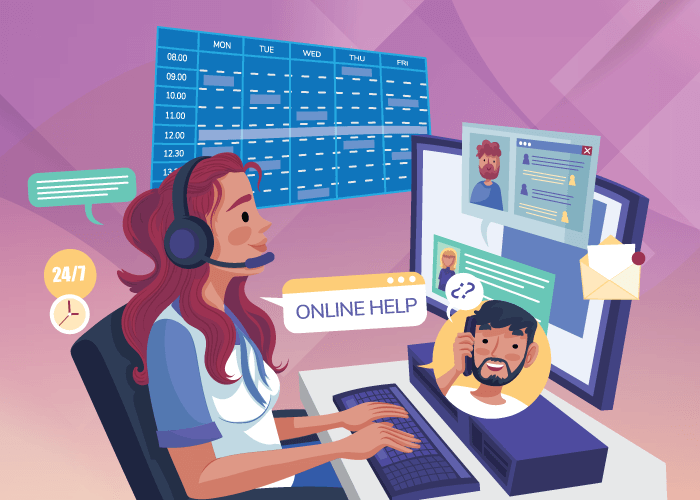With the rise in work from home as an option, more and more employees demand flexibility in hours and location. This has given rise to the possibility of a home-based call center that does everything a regular call center does, however, running entirely from home. Here we will highlight 4 best practices that can help ensure your work from home call center runs smoothly.
How to Make a Home-Based Call Center Work Effectively?
Agents and employees prefer to be employed at a work from home call center because it offers flexibility and convenience that can directly impact the quality of their work. With remote or virtual call centers, employees do not have to worry about commuting or work their location. They can work from the comfort of their homes while still doing their job well.
But as a call center manager, virtual call centers may seem like an unproductive alternative as you are not able to keep a constant eye on your agents. So, what are some ways to improve work from home call center productivity that can keep managers and agents happy? Here’s a look.
1. Invest in Virtual Call Center Software to Improve Productivity
Unlike on-premise call centers, virtual call centers comes equipped with necessary call center tools to let your remote and work-at-home agents perform well. Here are some of the top features included:
- Virtual phone numbers (toll free, local, and international numbers) — To improve local and international calling at cheaper rates.
- Call forwarding and routing — Direct and route calls based on location, time, skills needed, etc.
- IVR systems — An automated response that interacts with customers when agents are occupied.
- Extensions for different departments and call transfer — To improve connectivity and collaboration between teams and departments.
- Call recording — To record business calls for quality assurance.
- Outbound calling — Includes a web dialer and customizable caller ID capabilities to make local and international calling easier.
2. Choose Useful Project Management Systems & CRMs
To ensure that employees are doing their jobs well, it is important to have reliable systems in place that track projects, progress, and more. Here is where project management and customer relationship management systems come into play. With the right systems, your teams can create and manage tasks, update customer information and interaction, and more from any location. And you can keep track of their progress, review recordings of calls, and offer ways to improve.
3. Get Outbound Calling Features
An outbound calling service can be very helpful when running a work from home call center. Outbound calling makes local and international calling from any location easy and inexpensive. You can get outbound calling through your VoIP service provider along with your selected local, toll free, and international virtual phone numbers.
With this service in place, your remote employees can call local and international customers by displaying local or toll free caller IDs instead of a random, unknown number. For example, when calling Florida, they can display a Miami local number or US toll free number. And when calling Dubai, they can display a Dubai local number or UAE toll free number. Customers are more likely to answer and even return the call of a number they recognize as local or if it is a toll free number. An international or “unknown” number is much more likely to not get answered.
Plus, the web dialer makes it quick and easy to place and answer calls on any device it is installed on; such as a computer, laptop, smartphone, etc. You can store customer contact information and interaction in the dialer, as well as check voicemails. All of this makes an outbound calling service a work from call center must-have.
4. Track Call Center KPIs
Finally, track performance through call center KPIs. Software such as your CRM or VoIP phone system will help you get call reports and analytics. Here you will find information about:
- How many calls were answered
- How long the agent took to answer the call
- Duration of the call, and more
Common work from home call center KPIs to track include:
- Average time in queue
- Average response time
- First call resolution
- Average handle time (AHT)
- Customer satisfaction (CSAT) scores
Increase Productivity and Accountability for Your Virtual Call Center
Feeling more confident about running a work from home call center? There are plenty of tools and practices that can make virtual call centers work effectively. The trick is to find what works best for your needs. Call us at 1 (888) 908 6171 to learn more about how our services can improve your call center.






